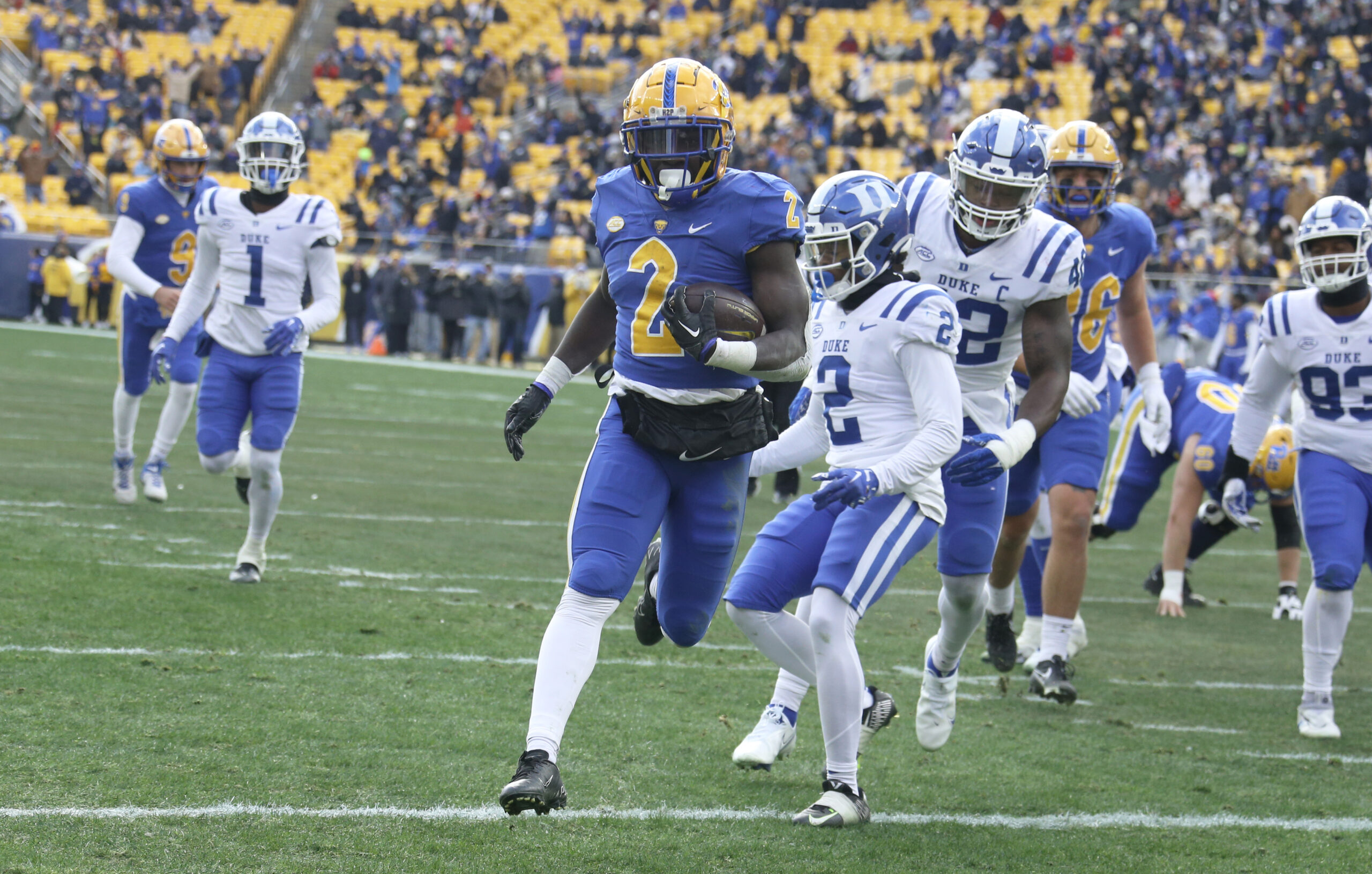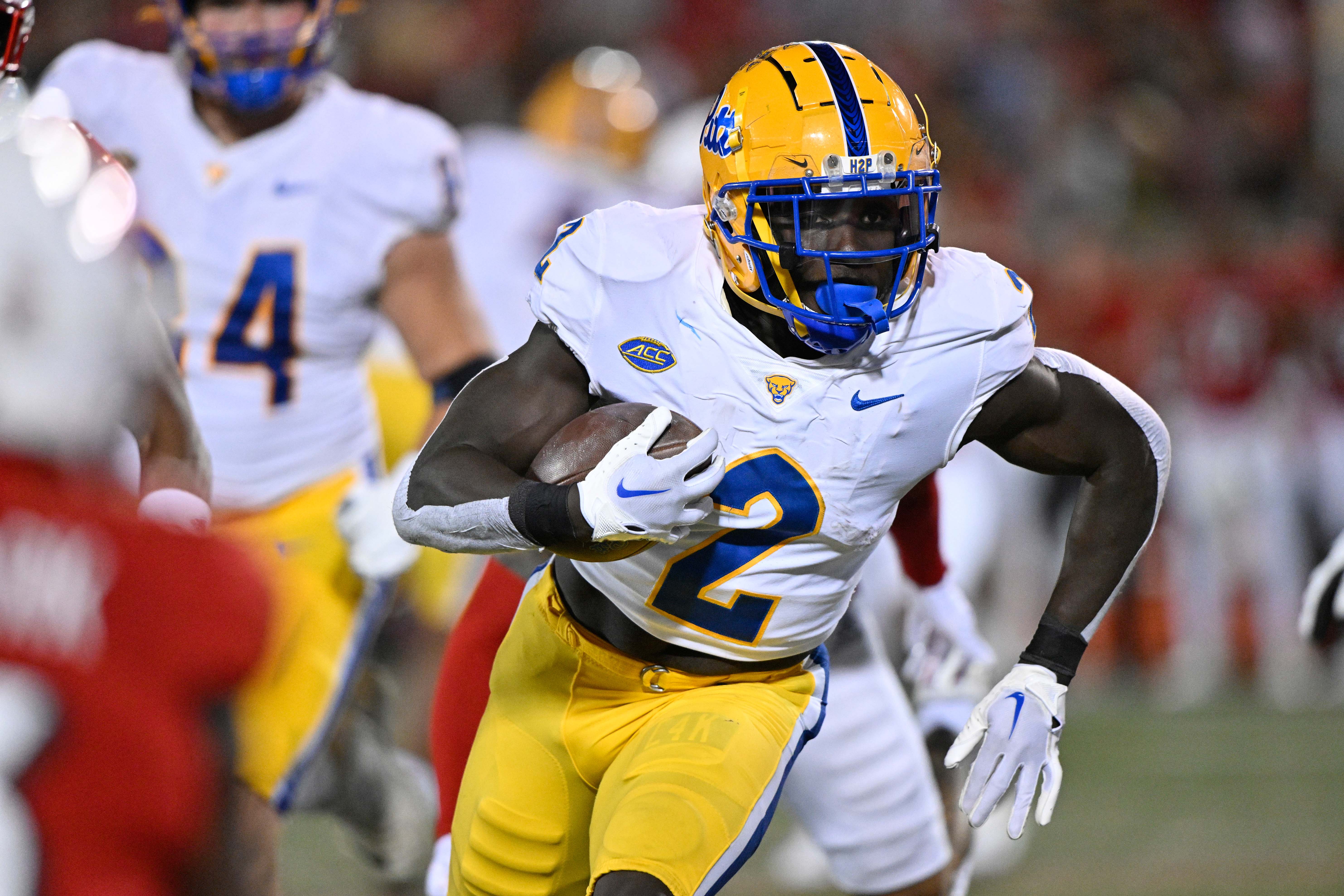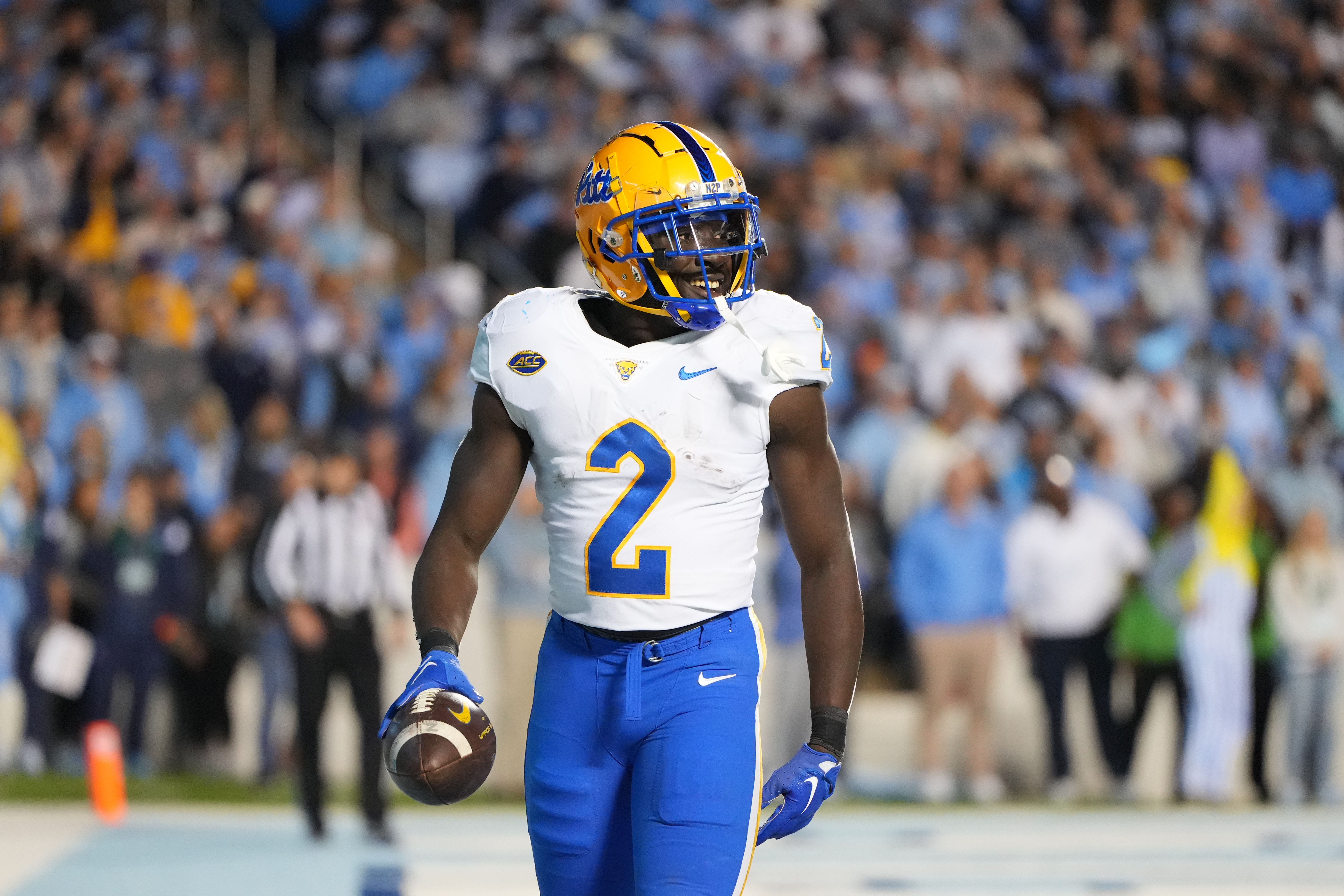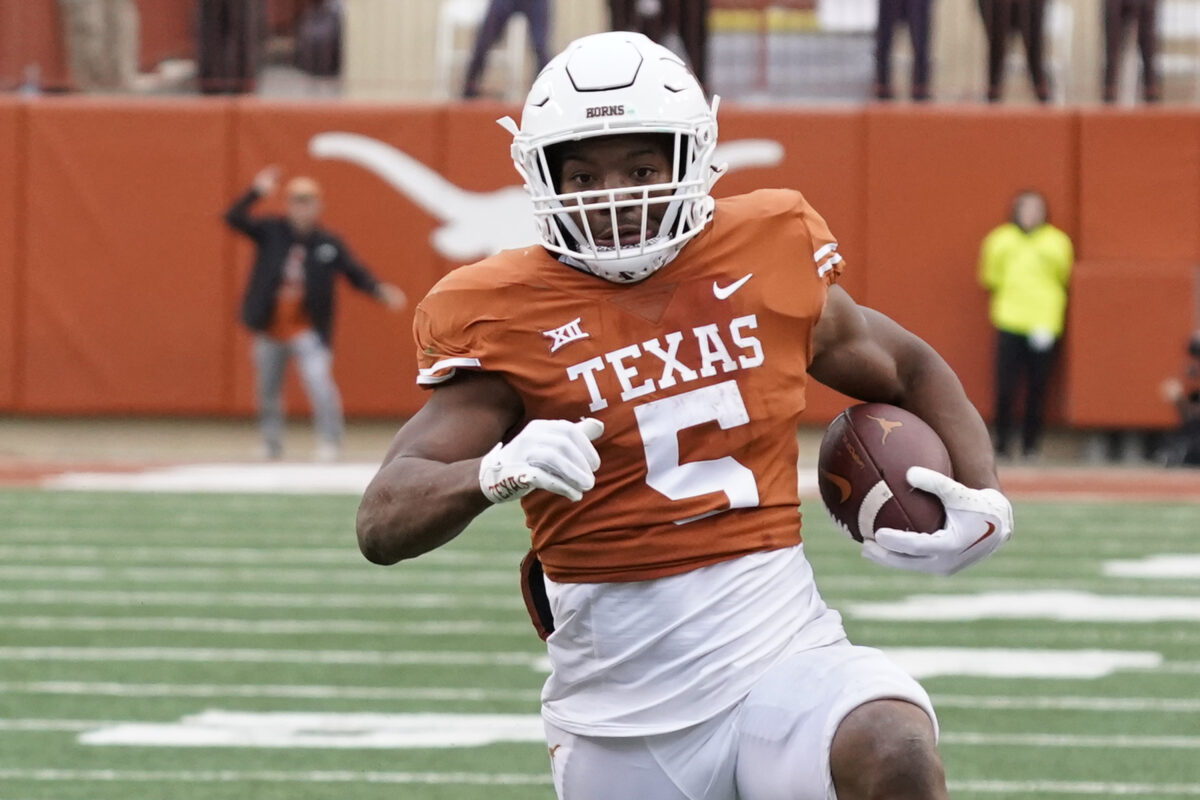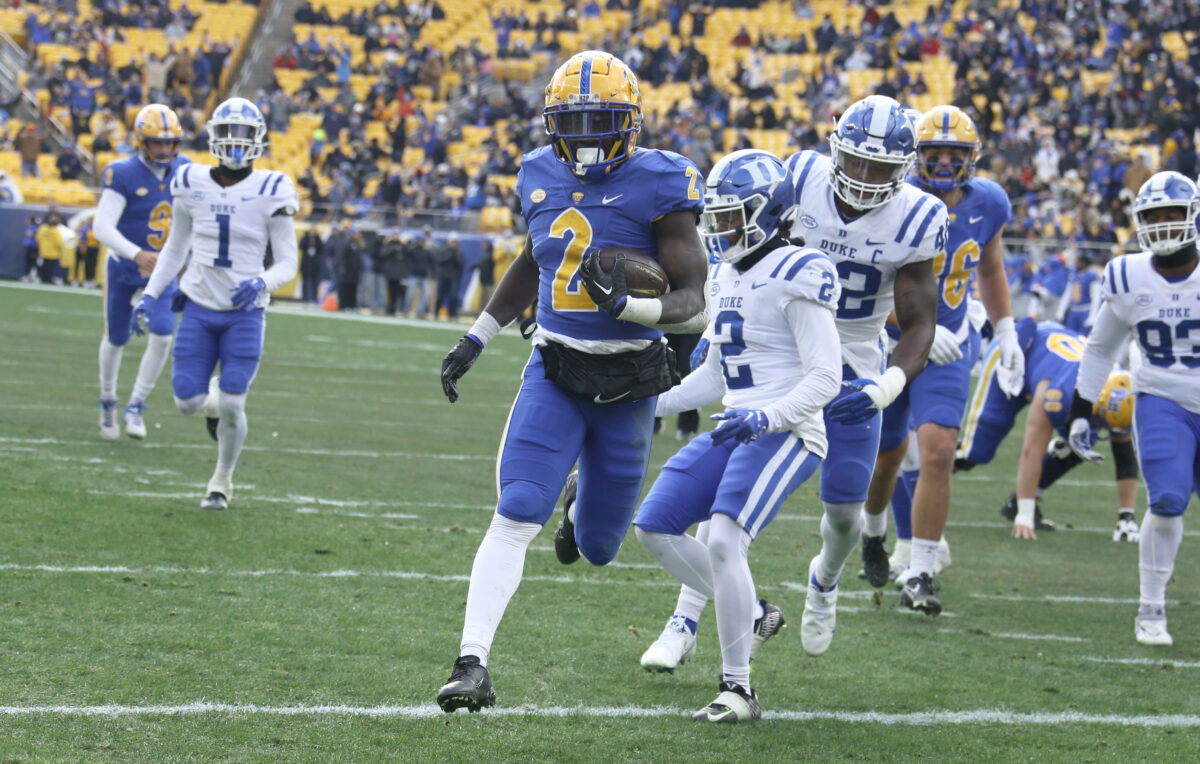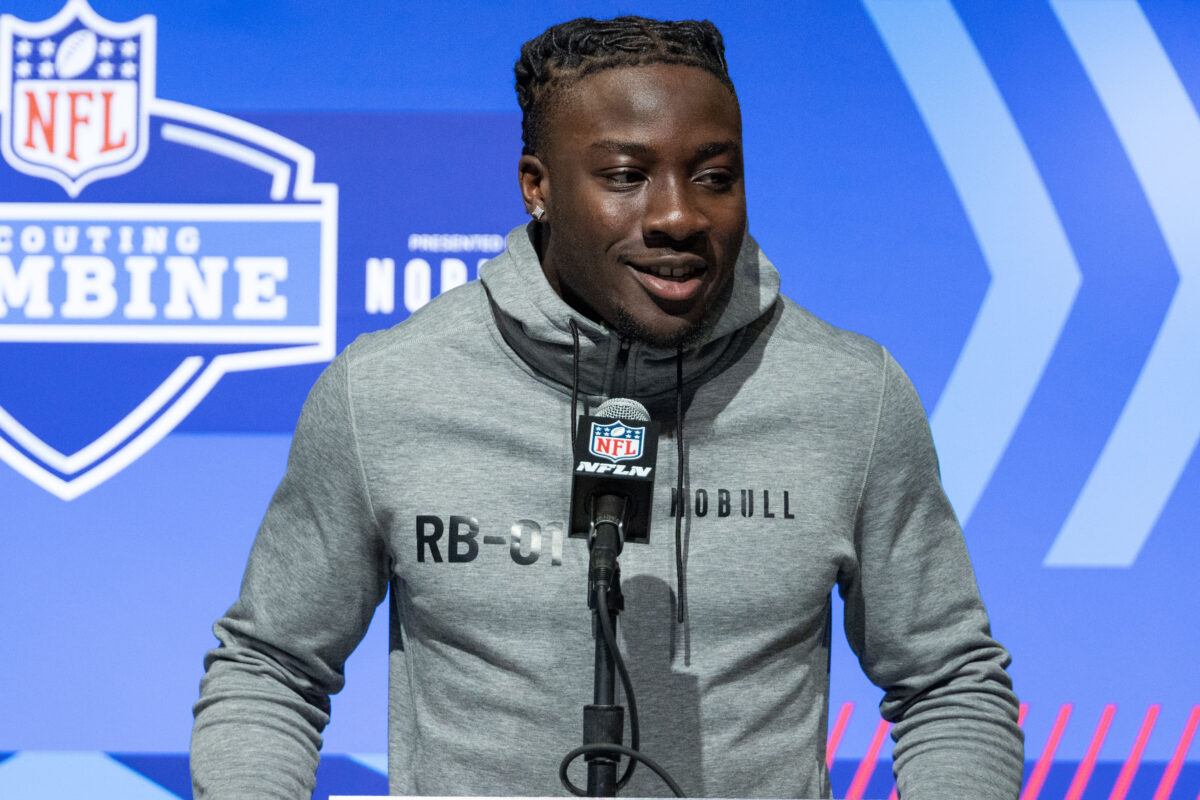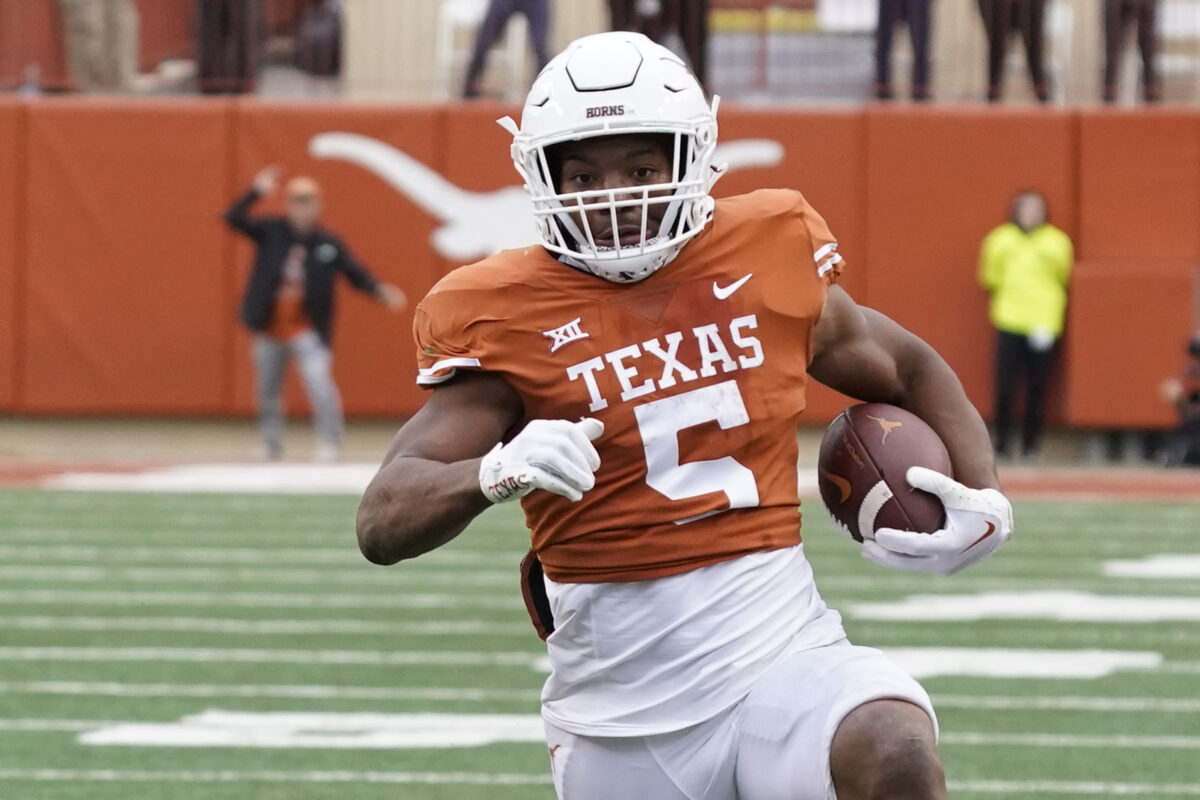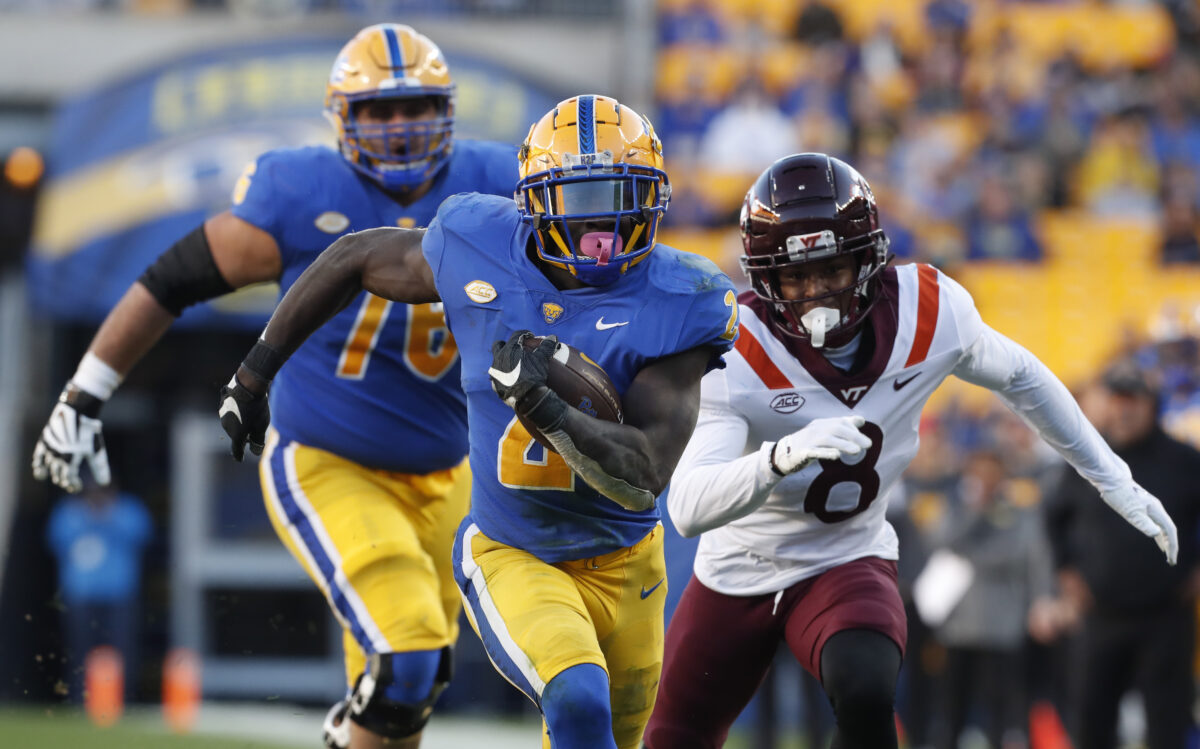Up next in Unpacking Futute Packers is Pittsburgh RB Israel Abanikanda.
The Unpacking Future Packers Countdown is a countdown of 100 prospects that could be selected by the Green Bay Packers in the 2023 NFL draft.
All signs point to Aaron Jones being back with the Green Bay Packers in 2023. With his return, Jones will once again team with A.J. Dillon to form one of the better running back duos in the league.
Dillon is set to be a free agent next season and even if Jones is back, next season could mark the end of his tenure at 1265 Lombardi Avenue.
With those two potentially on their way out the door, the Packers will likely look to add a running back in the 2023 NFL Draft.
A player they could target on day three of the draft is Israel Abanikanda. The Pittsburgh running back checks in at No. 88 in the Unpacking Future Packers countdown.
Abanikanda, the New York Gatorade Player of the Year as a senior at Abraham Lincoln high school, scored one rushing and one receiving touchdown during his first season at Pitt. In 2021, Abanikanda rushed for 635 yards and seven touchdowns. He added 24 receptions for 197 yards and one touchdown.
This past season Abanikanda set a couple of Pitt rushing records. Abanikanda rushed for 1,431 yards and 20 touchdowns. Abanikanda set the program single-season record for 100-yard rushing games in a season (9). He broke Tony Dorsett’s single-game rushing record with a 320-yard effort against Virginia Tech.
“Abanikanda finished the season leading the country in all-purpose yards,” Christopher Carter, the Pitt reporter for the Pittsburgh Post-Gazette said. “He’s a consistent threat to break a game open if the defense or special teams unit gives him a crease to attack. Against Virginia Tech, he tied Pitt’s program single-game record for touchdowns with six that’s stood since 1910 and simultaneously broke Tony Dorsett’s 1974 single-game rushing record with 320 yards. He became the first power five conference player to top 300 yards and have six rushing touchdowns in a single game since Ricky Williams did it in 1998.”
Abanikanda was a track athlete in high school, where he was a two-time gold medalist in the 100-meter at the New York Mayor’s Cup Race. That explosiveness makes him a home run threat. With his burst he’s able to consistently rip off explosive runs. According to Pro Football Focus, Abanikanda finished the season with 38 runs of 10-plus yards.
“His best strength is his explosiveness and speed,” Carter said. “Not only does Abanikanda run hard, but when he switches to his second gear, he’s almost impossible to stop. When he’s in space, tacklers must be disciplined because he will find various ways to make players miss. If it comes down to a chase, I can’t think of anyone who’s ever caught him from behind.”
Abanikanda stays balanced through contact and has the power to run through arm tackles. He consistently picks up yards after contact and runs with an attitude. Once he gets to the second level, he’s shifty enough to make the first man miss. According to PFF, had 644 yards after contact this past season and forced 46 missed tackles.
“When Abanikanda gets in space, defenders have to act fast,” Carter said. “He can blow by you if you hesitate, spin around you if your feet are slow, or run through an arm tackle if you don’t use the right technique. If he makes a guy miss and another defender isn’t within five yards, he can turn a play into a touchdown in a hurry. Most of those yards after contact come after making a player miss at the second level and then finishing a play for a score because nobody could catch him in his second gear.”
The Panther running back has serviceable vision. It’s not a strong suit, but once he sees the hole he runs toward daylight. He displayed improved patience this past season and has a better feel for developing lanes.
“His vision made significant strides in 2022,” Carter said. “He used to primarily look to break the long runs, and in doing so missed opportunities for important down and distance plays. This year he learned how to run between the tackles more efficiently and still get to the second level to become a problem for defenders to stop.”
Nobody will confuse Abanikanda for Danny Woodhead. However, he’s more than capable of being a threat as a receiver out of the backfield. He’s dependable in pass protection. He steps in the hole and lowers his pads into oncoming traffic.
“Abanikanda won’t be the receiving back who makes spectacular grabs away from his frame,” Carter said. “But he is capable of making routine catches and running solid basic routes around the line of scrimmage to cause problems for defenses. Against West Virginia, he caught a slant pass over the middle and had the momentum to slice through the defense for a huge touchdown that tied the game late in the fourth quarter. His receiving skills could use improvement, but a good pass to his numbers is a dangerous thing for a defense.”
Abanikanda also brings limited special teams value as a kick returner. He finished his career at Pittsburgh with 17 career kick returns and one touchdown. He averaged 24.1 yards per return.
Fit with the Packers
Abanikanda checks a lot of boxes with his size, speed, and age (20). The Packers need to add a third running back and Abanikanda could serve as the backup to Jones and Dillon as a rookie and take on a more expanded role the following season.
With his speed, Abanikanda is capable of ripping off chunk plays, much like Jones has done during his time in Green Bay.
“Abanikanda is a potential workhorse running back who could also have the speed to score if your offensive line did well enough,” Carter said. “Pitt brought back it’s entire starting offensive line the year before and that helped Abanikanda have the strong year that he did. If I’m a general manager with a good line and need at running back, Abanikanda is absolutely on my radar for his ability to hit home runs. He runs hard and forces defenses to honor him as a scoring threat at any time.”
[mm-video type=playlist id=01eqbxb1xg7g19wqdc player_id=01eqbvhghtkmz2182d image=]
